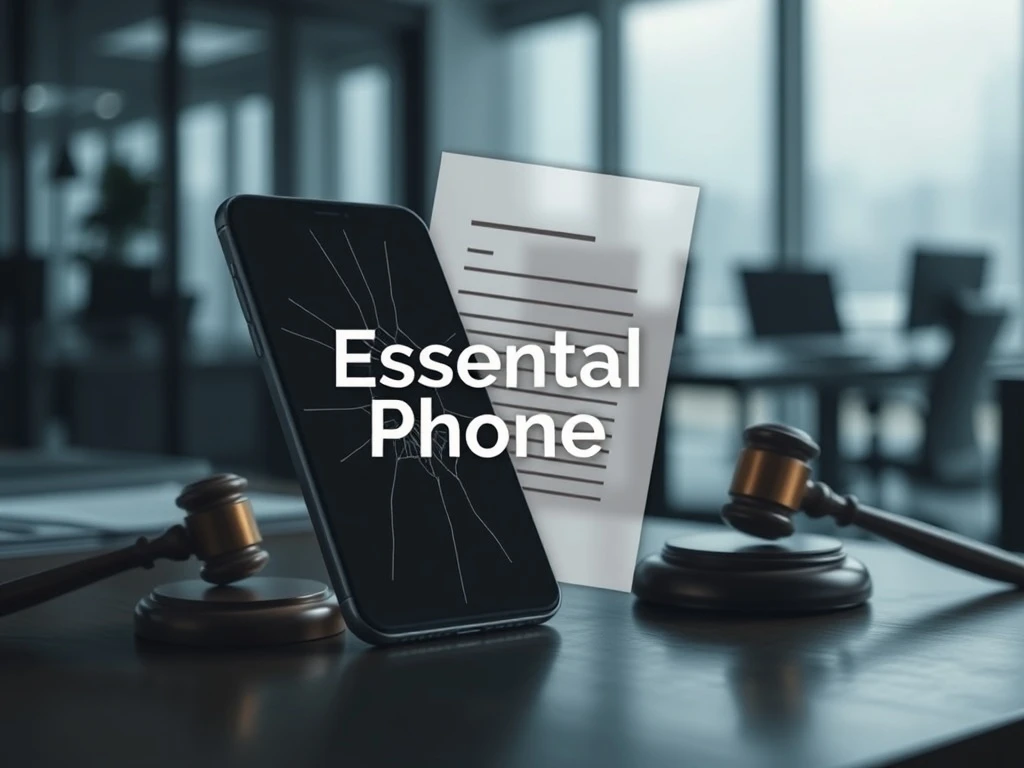The tech world watched closely as Essential Products, the ambitious smartphone company founded by Android co-creator Andy Rubin, announced its surprising closure. This significant development culminated in the Essential Phone bankruptcy filing, marking the end of a venture that once promised to revolutionize the mobile industry. Many industry observers questioned the reasons behind this abrupt halt. Furthermore, entrepreneurs and tech enthusiasts are now analyzing the implications of this high-profile failure.
The Vision Behind Essential Products and Its Early Challenges
Andy Rubin, a prominent figure in mobile technology, launched Essential Products in 2017. His vision was clear: create a minimalist, high-end smartphone free from bloatware and unnecessary features. This ambition led to the Essential Phone (PH-1), a device with a unique modular design and premium build quality. However, the PH-1 faced immediate hurdles upon its release. Initial sales were significantly lower than projected. Consequently, the company struggled to gain market traction against established giants like Apple and Samsung.
Understanding the Chapter 11 Bankruptcy Process
The Essential Phone bankruptcy was formally a Chapter 11 filing. This legal process allows a company to reorganize its business affairs, debts, and assets. Crucially, Chapter 11 provides a debtor with a fresh start, though it often involves selling off assets to pay creditors. It differs from Chapter 7, which typically involves liquidation and the complete cessation of business operations. In Essential’s case, the filing signaled an inability to continue operations effectively. Ultimately, it led to the winding down of the company.
Key Factors Contributing to the Essential Phone Bankruptcy
Several critical factors contributed to the eventual Essential Phone bankruptcy. Firstly, intense market competition proved overwhelming. The smartphone market is notoriously saturated, making it difficult for new entrants to carve out significant share. Secondly, the PH-1’s pricing was a major barrier. Its initial cost was comparable to flagship devices from Apple and Samsung, yet it lacked their brand recognition and extensive ecosystem.
Moreover, software updates and support were inconsistent. Users reported issues and delays, which eroded consumer trust. Furthermore, the company faced internal challenges, including reports of executive departures and strategic shifts. These issues collectively hampered Essential’s ability to build a sustainable business model. Ultimately, the lack of sustained sales momentum sealed its fate.
The Aftermath: Impact on Users and Unfinished Projects
The Essential Phone bankruptcy had direct consequences for its existing user base. Essential Products announced it would cease all operations, including software updates and customer support for the PH-1. This left many users without ongoing security patches or feature enhancements. However, the company did release a final software build for the PH-1. This provided some closure for its dedicated community.
Furthermore, Essential had been working on a highly anticipated successor, known as Project GEM. This innovative device featured a radically different form factor, focusing on a tall, narrow screen and a unique user interface. Project GEM was intended to redefine the smartphone experience. Sadly, its development was halted with the company’s closure. Ultimately, the intellectual property and other assets of Essential Products were acquired by Carl Pei’s Nothing Technologies. This acquisition aimed to leverage Essential’s patents and talent for future endeavors.
Lessons Learned from the Essential Phone Bankruptcy
The Essential Phone bankruptcy offers valuable lessons for hardware startups and the broader tech industry. Firstly, even with significant funding and experienced leadership, success in a highly competitive market is not guaranteed. Brand recognition and a strong ecosystem are crucial for consumer adoption. Secondly, innovation alone is often insufficient. A robust business strategy, effective marketing, and consistent product support are equally vital.
Moreover, the speed of technological change demands constant adaptation. Companies must quickly respond to market shifts and consumer demands. Ultimately, the story of Essential Phone highlights the immense challenges faced by new players attempting to disrupt established industries. It underscores the importance of not only a compelling product but also a sustainable path to market and profitability.
The filing for Essential Phone bankruptcy marked a significant moment in the smartphone industry. It represented the end of an ambitious, yet ultimately unsuccessful, journey for Essential Products. Despite its innovative design and the pedigree of its founder, the company could not overcome the formidable challenges of a saturated market. This event serves as a stark reminder of the complexities involved in launching and sustaining a hardware venture. Moreover, it emphasizes the critical role of market timing, strategic execution, and unwavering consumer trust in achieving long-term success. The legacy of Essential Phone will continue to be debated, offering valuable insights into the volatile world of consumer electronics.
Frequently Asked Questions (FAQs)
- What was Essential Products?
Essential Products was a technology company founded by Android co-creator Andy Rubin, known for developing the Essential Phone (PH-1), a high-end Android smartphone with a modular design. - Why did Essential Phone file for Chapter 11 bankruptcy?
Essential Phone filed for Chapter 11 bankruptcy primarily due to intense market competition, lower-than-expected sales of its flagship device, strategic missteps, and an inability to secure sustained funding in the highly saturated smartphone market. - What happened to Essential Phone users after the bankruptcy?
After the Essential Phone bankruptcy, Essential Products ceased all operations, including software updates and customer support for the PH-1. However, the company did release a final software build to its devices. - What was Project GEM, and what happened to it?
Project GEM was an innovative, radically different smartphone concept Essential Products was developing before its closure. It featured a unique tall, narrow form factor. Development ceased with the company’s bankruptcy. - Who acquired Essential Products’ assets?
Carl Pei’s Nothing Technologies, a consumer technology company, acquired the intellectual property and other assets of Essential Products following its bankruptcy filing.


















